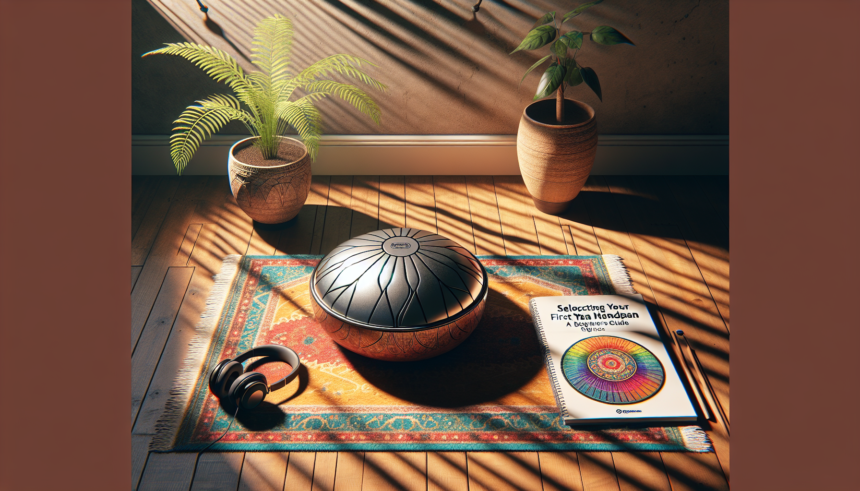<!DOCTYPE html>
<html lang="en">
<head>
<meta charset="UTF-8">
<meta name="viewport" content="width=device-width, initial-scale=1.0">
<title>Selecting Your First Ayasa Handpan</title>
</head>
<body>
<article>
<p>Ayasa handpans are captivating musical instruments known for their ethereal sounds and unique designs. These percussion instruments have gained popularity for their ability to produce soothing and meditative tones. If you're considering purchasing your first Ayasa handpan, this guide will walk you through the process of selecting the perfect model for you, whether you're a complete beginner or have some musical experience.</p>
<h2>Understanding the Ayasa Handpan</h2>
<p>Before selecting an Ayasa handpan, it’s crucial to understand what makes these instruments stand out. Invented in the early 21st century, handpans are part of the idiophone class of instruments, meaning they produce sound primarily through the vibration of their material. Crafted with precision, Ayasa handpans are renowned for their durability, tuning stability, and harmonic richness.</p>
<h3>History and Origin</h3>
<p>The modern handpan traces its roots back to the Hang, developed in Switzerland in the year 2000. Ayasa, among other brands, has since evolved the design to offer various models and tunings tailored to diverse musical styles and preferences. Understanding this background can help appreciate the craftsmanship and innovation that go into making a handpan.</p>
<h3>Types and Scales</h3>
<p>When selecting an Ayasa handpan, a critical decision is choosing the right scale. Handpans are typically tuned to specific scales, which dictate the notes available to play. Common scales include major, minor, and exotic variations such as Kurd, Hijaz, and others tailored for specific moods or cultural expressions. Consider what type of music or emotion you wish to express, as this will guide your scale choice.</p>
<h2>Factors to Consider When Choosing Your First Ayasa Handpan</h2>
<h3>1. Budget</h3>
<p>Handpans like Ayasa are intricate instruments, and this craftsmanship reflects in their pricing. Establish a budget that aligns with your investment willingness while considering the balance between cost and quality. Entry-level handpans can be more affordable, but premium models offer superior acoustics and playability.</p>
<h3>2. Intended Use</h3>
<p>Contemplate how you intend to use your handpan. If you plan to perform publicly, consider models with a broader dynamic range and robust construction. For personal meditation or small gatherings, even a simpler model may suffice. The purpose will help narrow down your options.</p>
<h3>3. Size and Portability</h3>
<p>Handpans come in various sizes, influencing both portability and sound. Larger models often produce deeper, resonant tones, while smaller ones are easier to transport. Assess your need for mobility - are you likely to travel with your handpan or keep it mostly in one location?</p>
<h3>4. Material</h3>
<p>Engage with the choice of material as it impacts sound and durability. Ayasa handpans are usually made from stainless steel or nitrided steel, each offering different benefits. Stainless steel models often provide clearer resonance, whereas nitrided models might boast enhanced durability.</p>
<h3>5. Tuning and Craftsmanship</h3>
<p>Handpans must be meticulously tuned to sound their best. Ayasa handpans are crafted with attention to tuning stability. Investigate whether your potential purchase comes from a reputable maker known for quality control. High craftsmanship ensures the longevity and consistent performance of your instrument.</p>
<h2>Trying Before Buying</h2>
<p>Ideally, you should try a handpan before purchasing. Playing various models gives you insight into their tactile responsiveness and sound quality. However, if buying online, ensure the vendor provides a trial period or a return policy, allowing you to test the instrument thoroughly at home.</p>
<h3>Research and Reviews</h3>
<p>Conduct thorough research on the handpan community’s forums and review sites. The experiences of other players can provide valuable insight into specific models and brands. Look for feedback from both novices and seasoned players to gauge the instrument’s suitability across skill levels.</p>
<h2>Maintenance and Care</h2>
<p>Once you own an Ayasa handpan, knowing how to care for it is crucial. Regular cleaning, proper storage, and periodic tuning checks are essential practices. Avoid exposure to extreme temperatures or humidity, as these environmental factors can warp the structure or detune the instrument.</p>
<h3>Protective Accessories</h3>
<p>Invest in protective accessories like cases or covers. These items safeguard your instrument during transit and protect it from dust and accidental damage. Often, sellers offer bundled packages that include these accessories along with the handpan purchase.</p>
<h2>Conclusion</h2>
<p>Choosing your first Ayasa handpan is an enchanting journey into the world of musical exploration. By understanding the types, scales, and specific features, beginners can find an instrument that not only suits their musical aspirations but also fits their lifestyle. Remember to consider quality, intended use, material preferences, and always inquire about opportunities to experience different models firsthand. With the right selection, an Ayasa handpan can provide years of musical joy and personal expression.</p>
<h2>FAQs</h2>
<h3>1. How much should I expect to spend on my first Ayasa handpan?</h3>
<p>The cost of Ayasa handpans can vary widely, from a few hundred to several thousand dollars. Set your budget according to your commitment level and the features you prioritize, such as tuning and material quality.</p>
<h3>2. Is it possible to learn handpan without any musical background?</h3>
<p>Absolutely. Many people find handpans accessible because they do not require a formal musical background. With practice, one can easily learn basic rhythms and scales, which are intuitive and harmoniously tuned.</p>
<h3>3. How often does an Ayasa handpan need tuning?</h3>
<p>Frequency of tuning depends on playing conditions and care. Often, a handpan retains its tune for extended periods. However, periodic professional tuning might be required, especially if the instrument is frequently used or exposed to harsh conditions.</p>
<h3>4. Can I play different musical genres on an Ayasa handpan?</h3>
<p>Yes, while handpans are often associated with meditative and ambient music, they are versatile instruments capable of adapting to various genres, including folk, jazz, and even experimental music, depending on the chosen scale.</p>
<h3>5. What size handpan is best for beginners?</h3>
<p>Beginners often start with a medium-sized handpan, which balances portability and a rich sound profile. These models are easier to handle and provide sufficient tonal range for learning and development of skills.</p>
</article>
</body>
</html>Selecting Your First Ayasa Handpan: A Beginner’s Guide

Leave a comment




